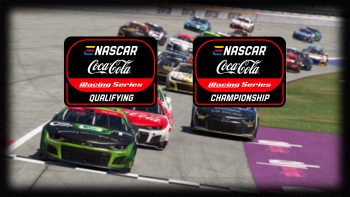
IndyCar Reality Check: GP of Indianapolis
May 20th, 2015 by Jaime Baker
Contained withinnfield of the Indianapolis Motor Speedway — and utilizing the oval’s Turn One and front straightaway — is a 14-turn, 2.439-mile road course that was re-designed in 2014. While we can race on a road course at The Brickyard, we use the old 13-turn, 2.605-mile configuration used by Formula One in its all-too brief flirtation with The Brickyard. There are two major differences between the old and new configurations. The first is a bypass of the old Turn 5-6-7 sector with a chicane designed to increase the speed down the backstretch. The second is the use of an infield section in the Oval Turn One which we have on the Bike configuration.
It doesn’t take a genius to figure out that the hardest part of building a setup for the IMS road course is deciding on the level of downforce. Of all the tracks where the digital Dallara DW12 (officially) races, the difference between downforce and drag is the most pronounced at Indy. iRacers choosing to run high downforce setups will have an advantage on the technical infield sections and a disadvantage on the long frontstretch; low downforce setups will — unsurprisingly – face the opposite challenges. Chris Simmons, race engineer for Scott Dixon’s #9 Target/Chip Ganassi Racing, told me pretty much nothing can be done to the car to increase grip to compensate for lower downforce. According to Simmons, they determine the best downforce level by starting with medium-low downforce, then gradually decrease downforce until they find the lowest acceptable level where Dixon can still control the car through the infield section.
While the old and new road course have their differences, they have two sections in common. The first of these sections are Turns 1-2-3-4. Turn 1 is a first gear corner where you should track out along the inside edge of Turn 2. Turn 2 itself is taken by hugging the inside curb as much as possible to set yourself up for Turn 3 which is a sweeping right hander.
Turn 4 is another corner best taken by hugging the inside curbing, although for the old configuration you will want to track-out near the outside of the pavement to position yourself up for Turn 5.
The second overlapping section involves our Turns 8-9-10-11. Turn 8 is located at the end of the infield backstretch and apexes as close to the inside curb as possible.
After apexing on the inside curb you’ll want to track-out to the outside then get back to the middle of the track in order to set yourself up for Turns 9 and 10. It is very common to take as much curb as possible in Turns 9 and 10, possibly even getting a little bit of grass in either corner. In fact, the Indy cars managed to dig ever-worsening holes in the dirt where the curbing ended, so frequently did the drivers use the grass.
Turn 11 is another corner where driving over the curbing is the best route. Again, it doesn’t take a genius to realize that Turn 11 is probably the most important corner on the track because it leads to the long frontstretch which is over a mile long.
Don’t forget about your Push to Pass here. The best locations to use it are obviously on the long frontstretch, but it’s also viable to use coming out of Turn 7 for the backstretch if you can get a good run on an opponent and outbrake them going into Turn 8.




















































